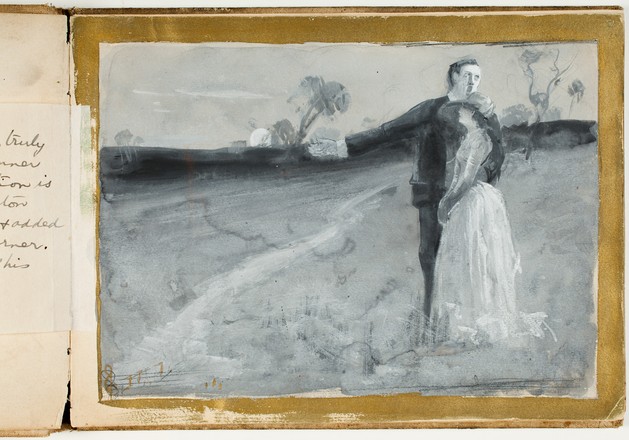
Sketchbook
1888–89
Pencil, pen and wash drawings on paper
Bequest of Sir William Dixson, 1952
DL PX78
Pencil, pen and wash drawings on paper
Bequest of Sir William Dixson, 1952
DL PX78
Arthur Streeton is often seen as one of the first colonial landscape painters to ‘truly’ see the Australian landscape. With his dry palette and impressionistic style, he captured the intensity of its harsh light. During the late 1880s, when he was in his early 20s, he became part of the painting movement often referred to as the Heidelberg School, named after an artists’ camp some 11km northeast of Melbourne. When dealer A H Spencer offered this sketchbook to Sir William Dixson in 1924, he told him that it was made by Streeton ‘during his best period’.* By the 1920s, Streeton’s position as Australia’s greatest landscape painter was well entrenched.
This sketchbook, however, reveals Streeton’s genuine talent as a draughtsman. Its contains largely pencil, ink and monochrome wash drawings of great confidence, liveliness and flair, skills which underpinned the success of his oil painting. This wash drawing of a young man declaiming his love in song is bold, strong and humorous, and shows that Streeton’s interests were much broader than the hot Australian bush. Also included in the sketchbook are pen and ink portrait sketches of his family and friends, snippets of romantic poetry, and an apparent shopping list.


 Back to list
Back to list